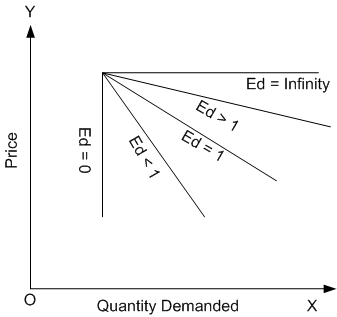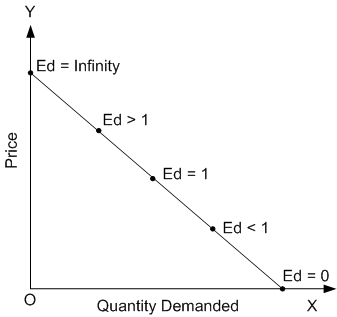Elasticity Of Demand
Elasticity of Demand: Price elasticity of demand is the responsiveness of demand to change in price. It is generally classified into five categories:
- Perfectly inelastic demand(ED = 0).
- Less than unit elastic demand (ED < 1).
- Unit elastic demand (Ed = 1).
- More than unit elastic demand (ED > 1).
- Perfectly elastic demand (ED = Infinity).

The figure shows comparison of demand curves with different degrees of elasticities.
Methods of Measuring Elasticity of Demand:
- Percentage Method: Under this method, we can calculate elasticity of demand by applying following formula:

- Geometric Method: Geometric method is used When elasticity is to be measured at different points on the straight-line demand curve.
Elasticity Along A Linear Demand Curve

From the figure, it is clear that the elasticity of demand is different at different points on a linear demand curve varying from 0 to infinity.
Elasticity And Expenditure
Relationship between Elasticity of demand & Total expenditure:
- If expenditure & price is positively related, Ed < 1.
- If expenditure & price is negatively related, Ed > 1.
- If expenditure does not change with change in price, Ed = 1.
Factors Determining Price Elasticity Of Demand For A Good
Factors affecting/determining the price elasticity of demand for a good:
- Availability of close substitute goods.
- Various uses of a commodity.
- Share in total expenditure.
- Level of prices.
- Level of income.
- Tastes, Preferences and habits.
- Nature of goods.
- Miscellaneous.